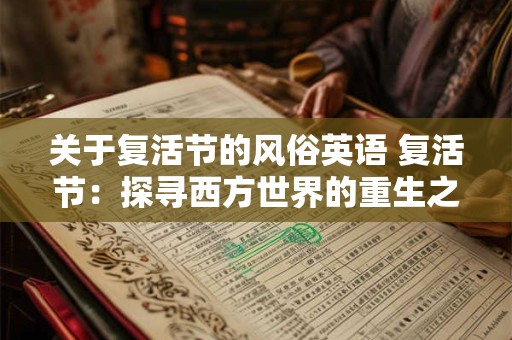The vibrant hues of spring burst forth, heralding the arrival of Easter—a time when the world pauses to celebrate the triumph of life over death. As the Christian festival of Easter approaches, it's a perfect opportunity to delve into the rich tapestry of customs and traditions that have woven their way into the hearts and minds of Western societies.
1. The Egg: Symbol of New Life
Easter eggs are perhaps the most iconic symbol of the season. Originally, they represented fertility and new life, long before they became associated with the resurrection of Christ. The custom of coloring eggs dates back to ancient times, when eggs were dyed and exchanged as gifts. Today, families gather to paint and decorate eggs, often hiding them for a fun egg hunt on Easter morning.
2. The Easter Bunny: A Mischievous Guest
While the egg symbolizes rebirth, the Easter Bunny is the playful messenger of this renewal. The legend of the Easter Bunny has Germanic origins, with the hare being a symbol of fertility and rebirth. Children eagerly await the arrival of the bunny, who is said to deliver colorful eggs and candy to those who have been good throughout the year.
3. The Story of Easter: A Resurrection Tale
At the heart of Easter lies the story of Jesus Christ's crucifixion and resurrection. Christians around the world celebrate this event, which they believe to be the cornerstone of their faith. The week leading up to Easter is known as Holy Week, culminating in Good Friday, the day of Jesus' crucifixion, and Easter Sunday, the day of his resurrection.
4. The Easter Vigil: A Night of Reflection
The Easter Vigil is a significant event in the Christian liturgical calendar, held on the Saturday evening before Easter Sunday. It is a time for reflection, prayer, and the celebration of new beginnings. During the vigil, new members of the church are baptized, and the entire congregation renews their baptismal vows.

5. The Easter Dress: A Fashionable Tradition
Easter is a time for renewal, not only spiritually but also physically. Many people take this opportunity to dress up in their finest attire. Easter hats, bright colors, and elegant dresses are all part of the fashion tradition, with families often gathering for special Easter meals dressed to the nines.
6. The Easter Meal: A Time for Celebration
Easter is a time for gathering with family and friends to share a meal. In many cultures, the Easter feast is a grand affair, featuring traditional dishes that vary from country to country. In the United States, ham is a popular choice, while in the United Kingdom, roast lamb is often served. In Greece, the traditional Easter meal includes a lamb roast, red wine, and a variety of desserts, including the famous Tsoureki, a sweet bread with a cross baked into the top.
7. The Easter Fire: A Ritual of Rebirth
In some Eastern Orthodox countries, the Easter fire is a significant ritual that marks the beginning of the celebration. The fire is lit on Easter Sunday, symbolizing the light of Christ and the victory over darkness. The fire is then used to light candles, which are then carried around the church and home, symbolizing the spread of Christ's light throughout the world.
8. The Easter Parade: A Public Display of Joy
In cities around the world, Easter parades are a public display of the joy and festivity of the season. Participants often dress in costumes, carry banners, and march through the streets, accompanied by bands and floats. The parades are a way to celebrate the new life and hope that Easter brings.
In conclusion, Easter is a time of renewal, hope, and celebration. Its customs and traditions have deep roots in history and are cherished by people of all ages. Whether it's the egg hunt, the feast, or the religious ceremonies, Easter is a time to reflect on the past and look forward to the future with a spirit of joy and gratitude.
